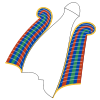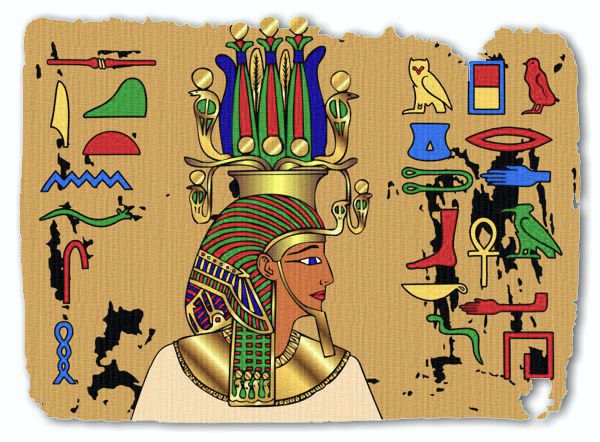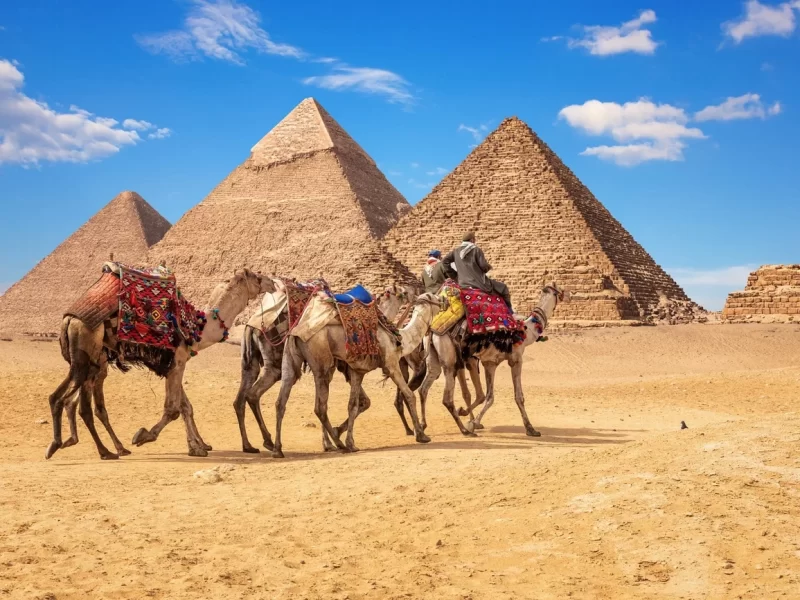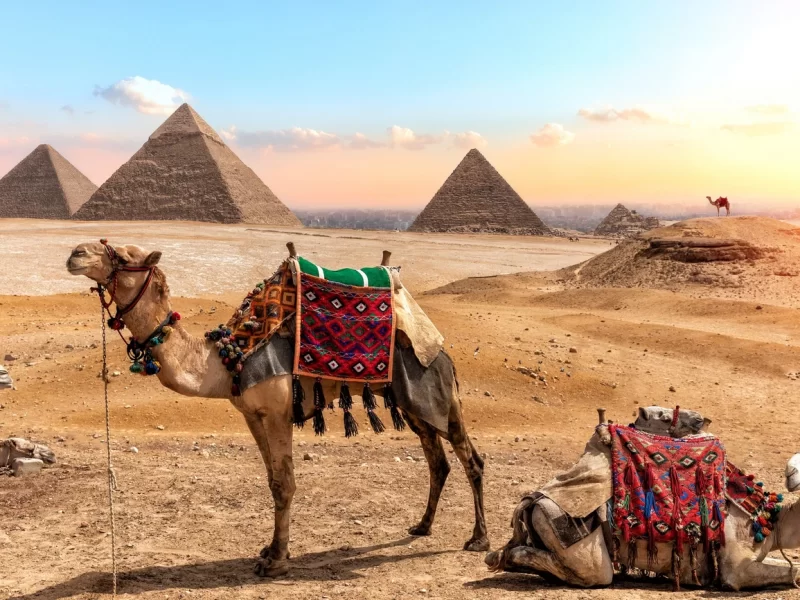Egyptian Crowns in Ancient Egypt
The Egyptian civilization used several different Egyptian crowns throughout its existence. Some were used to show authority, while others were used for religious ceremonies. Different pharaohs or deities wore each crown, and each crown had its own symbolic meaning and significance. The Egyptian crowns include the Atef, the Deshret, the Hedjet, the Khepresh, the Pschent, and the Hemhem.
ATEF

the crown of Osiris, is a combination of the white crown of Upper Egypt, the hedjet, and the ostrich feathers on both sides. It also often has a golden disc on the tip. Ostrich feathers, similar to those representing ma’at, symbolise truth, justice, morality, and balance. They also represent the centre of worship of Crisis, which is located in Busiris. The atef is typically worn over a pair of ram or bull horns as a headband.
The Atef crown has been seen since the 5th dynasty. According to Egyptian beliefs, this crown represents Osiris as the god of fertility, ruler of the afterlife, and representative of the cycle of death and rebirth. However, later pharaohs wore it because they thought that after death, they would transform into an Osiris-like figure.
In their tombs, the pharaohs would have themselves depicted as Osiris wearing his crown. During the Middle Kingdom, even regular citizens could have the Osiris crown because Osiris had become the judge of the deceased. It was also worn during religious rituals.
DESHRET

The Lower Egyptian crown, also known as a deshret, is a bowl-shaped red crown with a protruding curl. It is typically associated with the rulers and pharaohs of Lower Egypt. The word deshret is also the name of the barren land that surrounds the Nile River area.
The red colour of the crown is the symbol of the “red earth, an arid desert land that surrounded the fertile “black earth” of Kemet.
The curl of the crown is the symbol of the proboscis, or sting, of the honey bee.
The crown was woven, like a basket, of vegetable fibre, perhaps grass, straw, flax, palm leaf, or reed. It is theorised that it was passed down from king to king instead of being buried with every king, explaining why no royal deshret was found.
Representations of the deshret can be seen as early as the late Naqada I period, around 3500 BC. In these early predynastic times, it is believed that the crown was worn in association with the god Seth. It was only with the formation of the first dynasties, around 3000 BC, that it became the symbol of dominion over Lower Egypt.
According to Egyptian mythology, Geb gave deshret to the god Horus as a representation of his rule over Lower Egypt. The crown was then passed to the pharaohs, who considered themselves to be the successors of Horus.
When depicted in a human body, the goddess Neith is usually shown wearing the Lower Egyptian crown. The first representation of Neith in this crown was found in the Userkaf temple at Abu Gorab, built in 2499 BC.
HEDJET

The crown that the king of upper (south) Egypt wears is known as the hedjet, or hdt. It resembles a bowling pin and is also called the “White One. Furthermore, this crown is half of the double crown, the pschent. No crowns are known to have been found in any archaeological excavation. Some Egyptologists have speculated that the hedjet was made of leather, felt, or some other fabric.
Another possibility is woven like a basket, as vegetable fibre’s deshret (red crown) is known. A hedjet with Nekhbet, the vulture goddess, next to the head of the cobra goddess is the symbol used to represent the hedjet. Several Egyptian gods, such as Nekhbet and Horus, are seen in drawings and engravings wearing the hedjet. Images of this crown were found in Ta-Seti (northern Nubia in 3500–3200 BC), a tomb in Deir-el-Bahari, Narmer’s palette, and a statue of Pharaoh Sesostris I.
HEMHEM

The hem crown was a triple-decorated atef with corkscrew sheep’s horns and usually two uraei. The Egyptian word “hem hem” means “shout,” probably indicating that the crown of the emhem represents a battle horn.
PSCHENT

The double crown represented the unification of the two regions of Egypt, Upper and Lower Egypt. It is also referred to as shmty, which means “the two mighty,” or as pschent.
The pschent combines the hedjet (white crown of Upper Egypt) with the deshret (red crown of Lower Egypt).
Menes is credited with inventing the double crown, although the first pharaoh to wear the crown was Djet.
Horus is depicted wearing the double crown, as is Atum, who has a distinct relationship with the pharaoh.
As with the deshret and the hedjet, no pschent was found; all that is known about them comes from ancient tales, inscriptions, and representations.
Crown of the Hood

Attested as early as the Old Kingdom, the cap crown is most commonly associated with the 25th dynasty of Kushite kings, who are often depicted wearing the crown with two uraei. The remains of what appears to be a “hood crown” were found on Tutankhamun’s mummy.
Tutankhamun’s crown consisted of a gold sash wrapped around the king’s temples, which gripped a linen skullcap, which had largely deteriorated when excavating the tomb. A ribbon with a bow at the back of the head held the gold sash in place. Four urae are made of gold beads, and red and blue glass beads remain on the cap. In the centre of each ureus is a gold scroll containing the name Aten. The skullcap part of the crown resembled and was probably associated with the skullcap worn by the deity Ptah.





Comment (0)